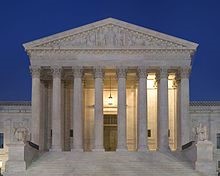
Happy Holidays from the OLLS
The 2019 capitol tree was provided by the Colorado State Forest Service. The placard next to the tree reads: “This subalpine fir tree was provided by Colorado State Forest Service […]


The 2019 capitol tree was provided by the Colorado State Forest Service. The placard next to the tree reads: “This subalpine fir tree was provided by Colorado State Forest Service […]

by Patti Dahlberg The “Red Summer” of 1919 refers to violent race riots that took place in more than 30 cities throughout the country between May and October. The most […]

by Patti Dahlberg With the 2020 Legislative Session just around the corner, it seems like a good time to review a few bill basics on bill sponsorship, bill summaries, and […]

By Jennifer Gilroy To listen to the news you would think the U.S. Supreme Court was concerned only with Second Amendment rights in hearing oral arguments last Monday. But they […]
Earlier this week we published part I of our series providing summaries of the interim committee bills that the Legislative Council approved at its meeting last Friday, November 15. Of […]